Law 5 Assignment: Corporate Liability and Legal Entity Principles
VerifiedAdded on 2020/04/07
|5
|917
|134
Essay
AI Summary
This essay delves into the realm of corporate liability under criminal law, specifically examining the extent to which organizations can be held accountable for the actions of their employees. It focuses on the identification doctrine, also known as the 'directing mind and will' theory, which attributes the actions of key individuals within a company to the company itself. The essay references key case laws like Lennard's Carrying Co. Ltd v Asiatic Petroleum Co Ltd and Daimler Company Ltd v Continental Tyre and Rubber Company (Great Britain Ltd) to illustrate the application of this doctrine. Furthermore, the essay discusses the principle of separate legal entity as established in Salomon v Salomon, highlighting the distinct legal identity of a company from its members. It also explores the concept of piercing the corporate veil as an exception to the separate legal entity principle, where courts may disregard the company's separate identity in cases of fraud or dishonesty. References to El Ajou v. Dollar Land Holdings plc and other sources provide a comprehensive analysis of these complex legal principles.
1 out of 5
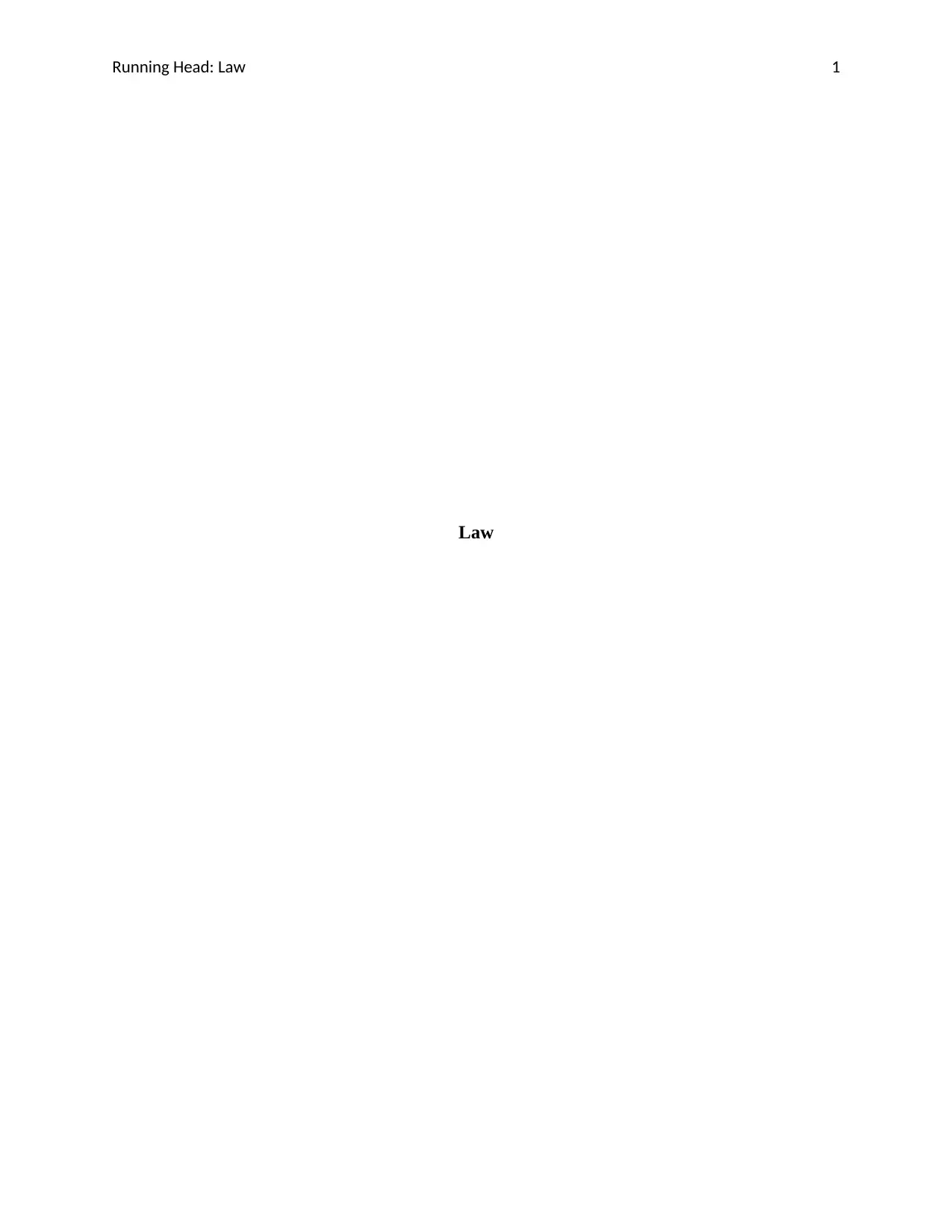
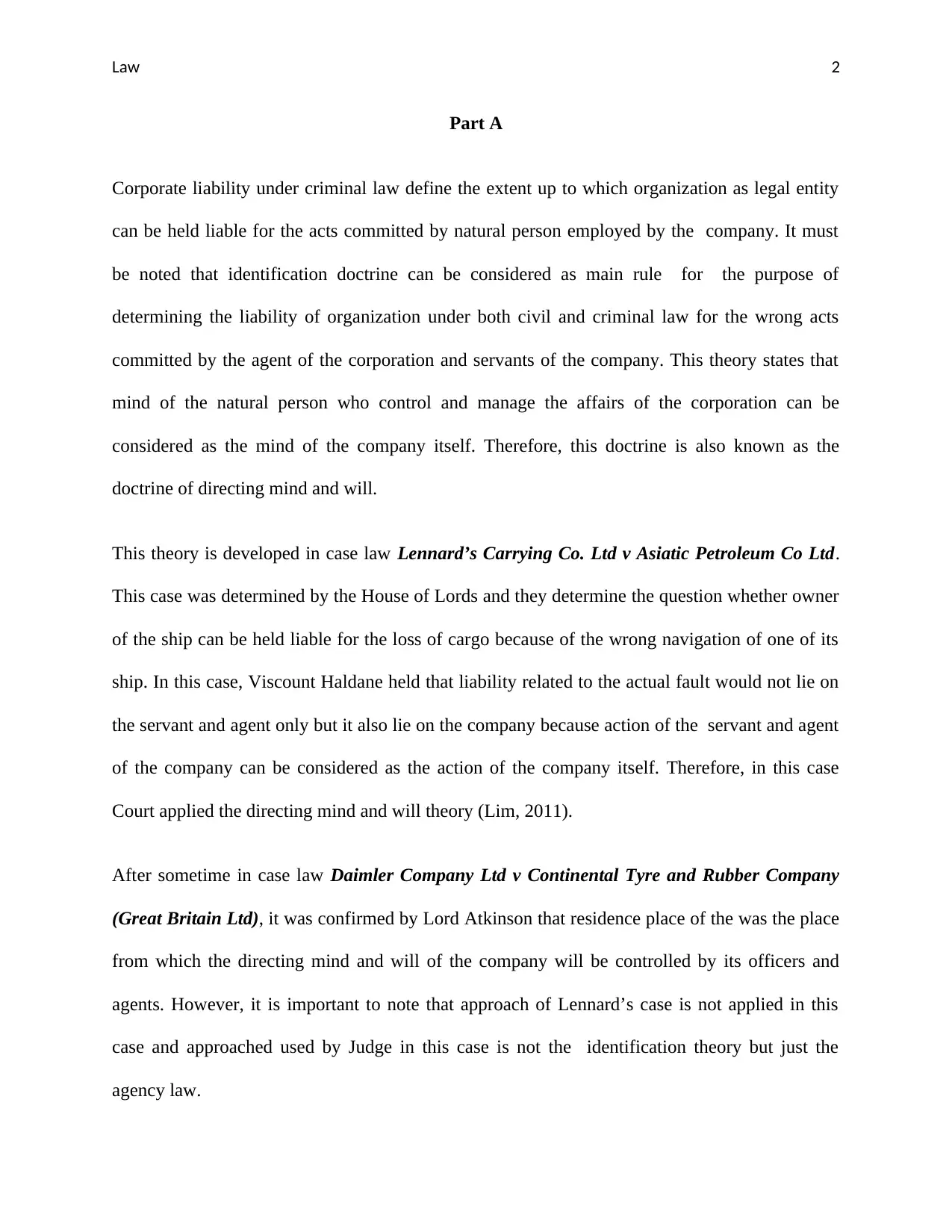
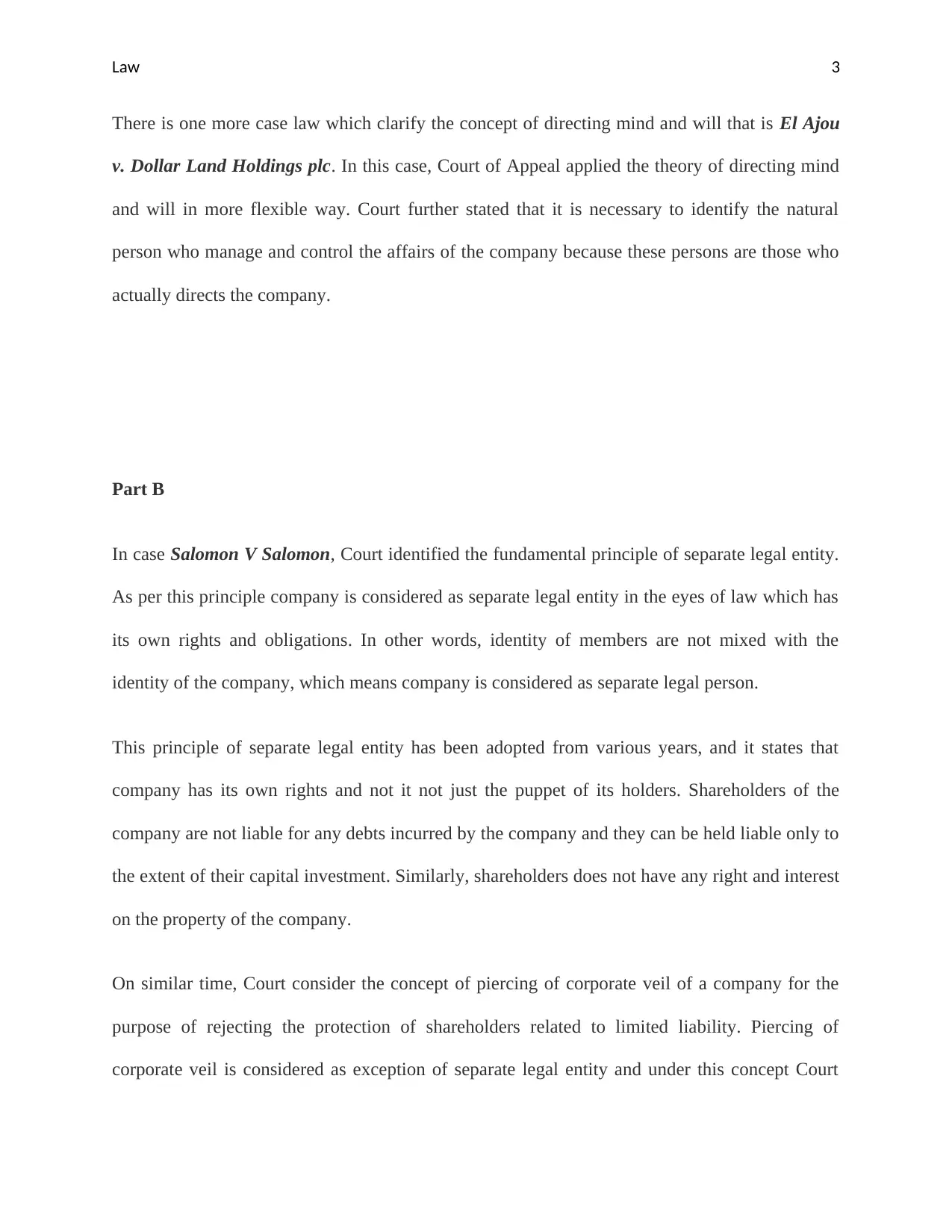

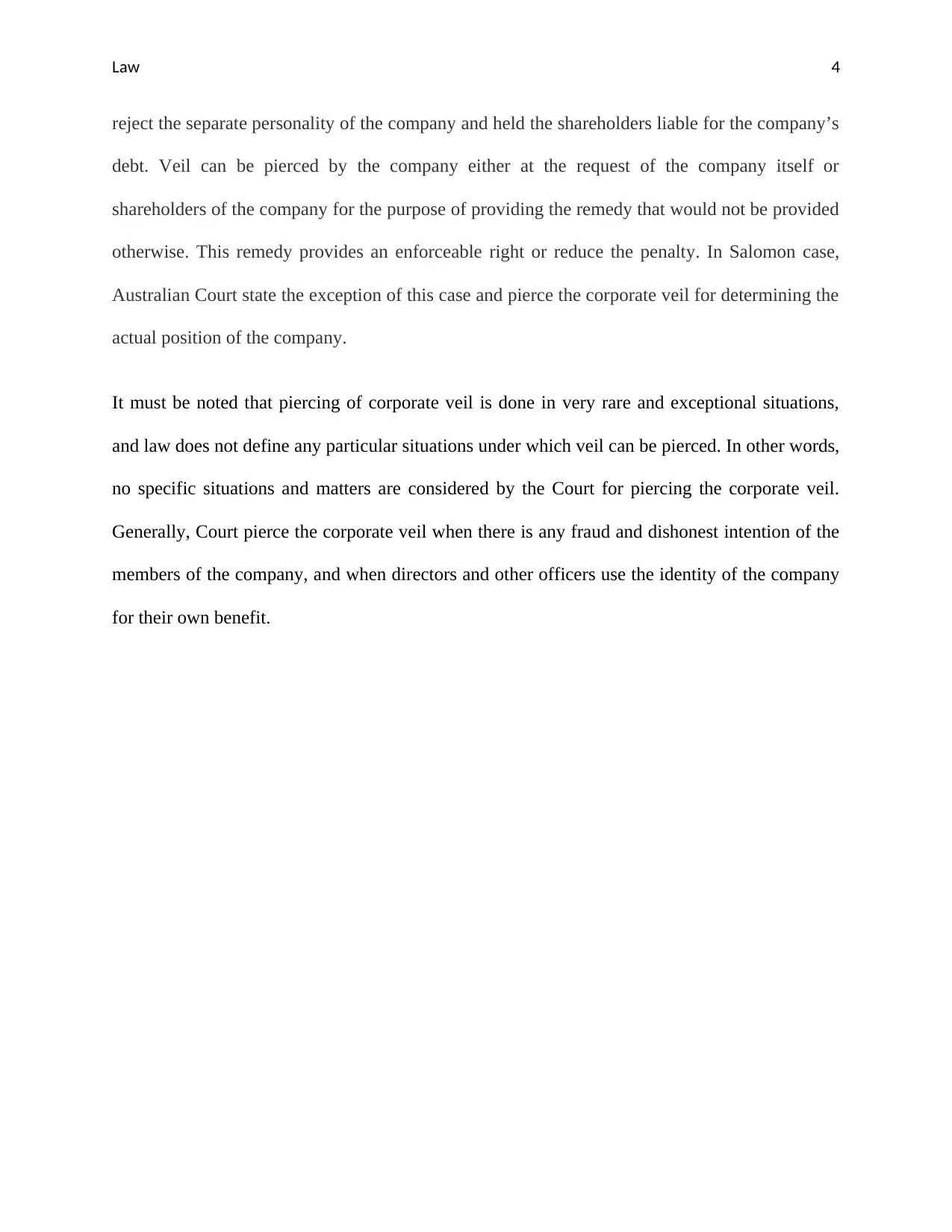
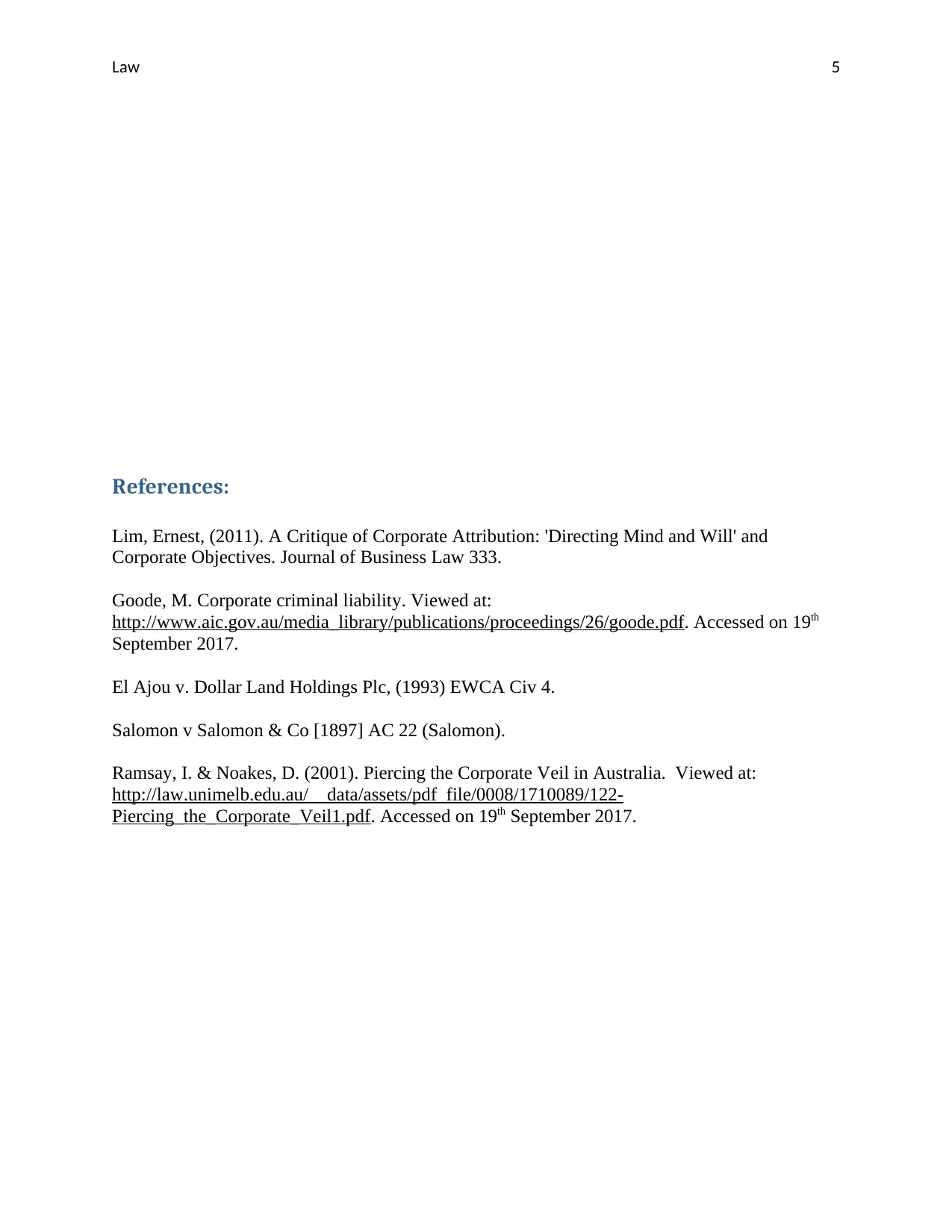






![[object Object]](/_next/static/media/star-bottom.7253800d.svg)